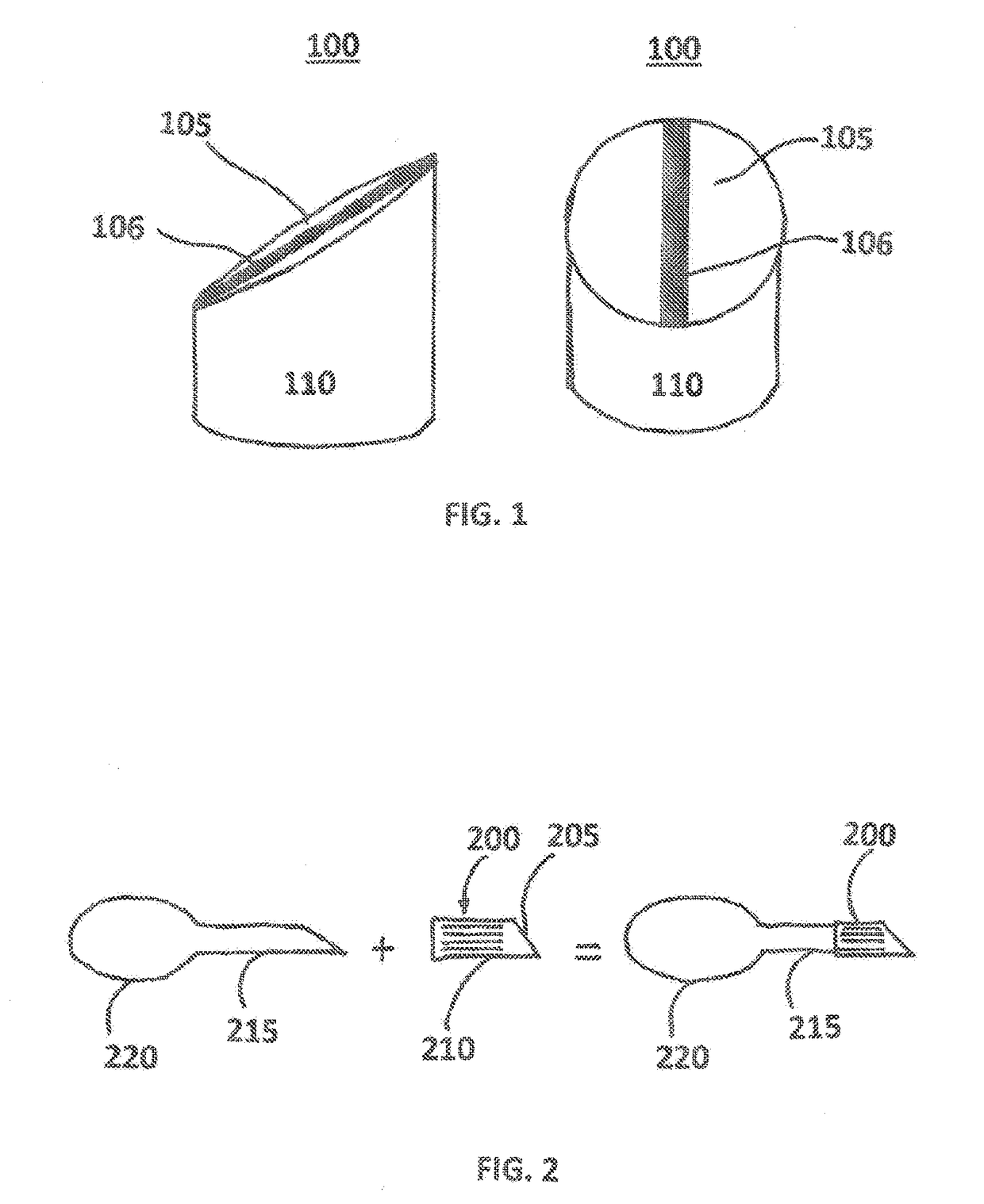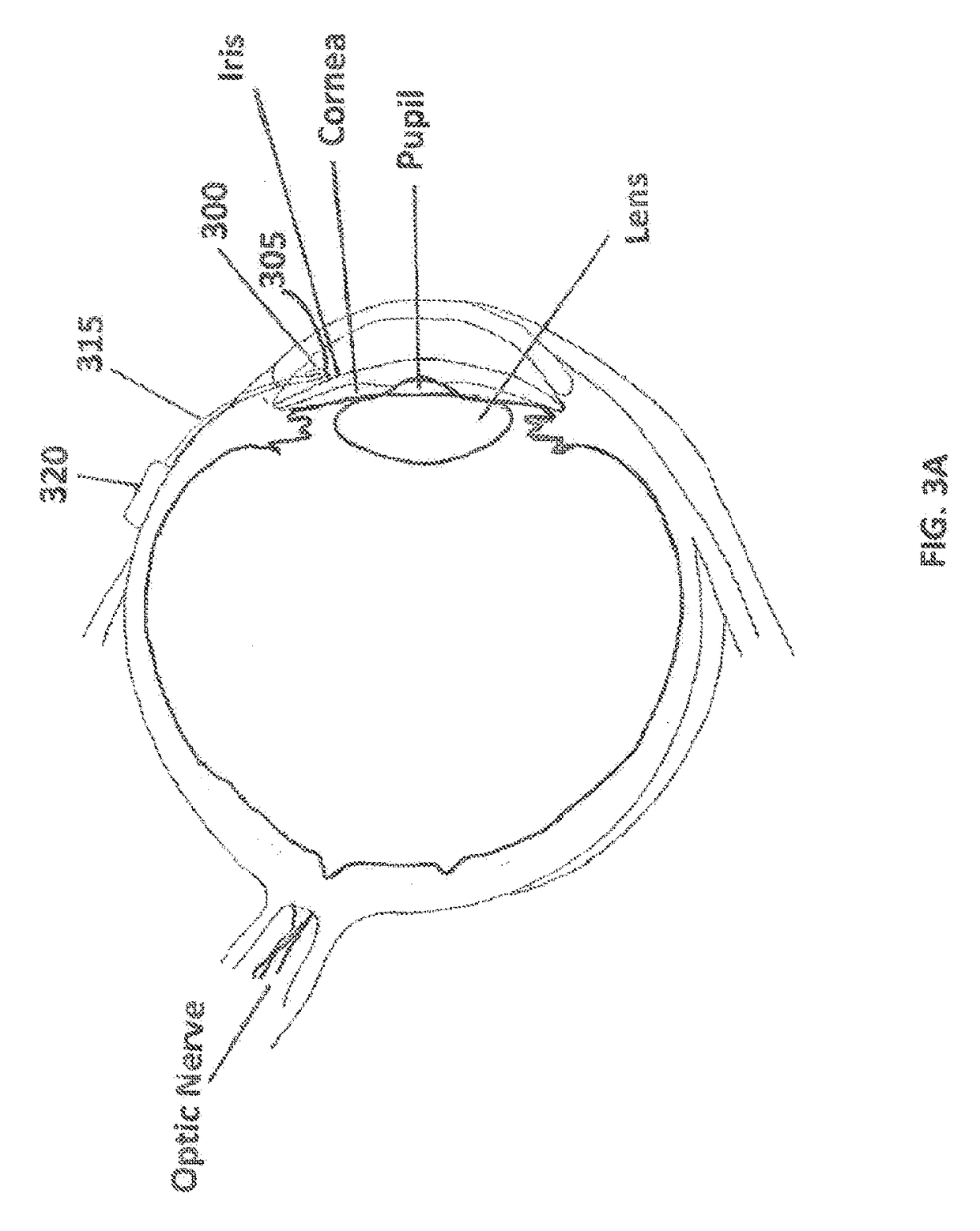Ocular filtration devices, systems and methods
a technology of ocular filtration and filter device, applied in the field of glaucoma treatment device, systems and methods, can solve the problems of vision loss and blindness, increasing the number of people losing sight due to glaucoma, and loss of peripheral vision in early cases
- Summary
- Abstract
- Description
- Claims
- Application Information
AI Technical Summary
Benefits of technology
Problems solved by technology
Method used
Image
Examples
example 1
[0056]Testing the GDDR in a model eye. The GDDR device was placed over the tip of a conventional GDD, and the tube placed into the model eye through a port. A second port was used to infuse fluid into the eye to maintain a physiologic pressure of 20 mmHg. The amount of fluid which passed through the tube was measured for 30 seconds. The membrane was placed initially with no laser perforations, then with enough laser to open half the membrane, and then more laser to open the membrane completely. Further, the tube was tested with no GDDR in place as a control. Three measurements were done for each configuration, and the results averaged. As shown in FIG. 7, increasing number of laser perforations allows for a titrable amount of flow through the tube of the GDD.
[0057]The GDDR was tested ex-vivo in an enucleated porcine eye. The device was placed over the tip of a conventional GDD, and the tube placed into the eye through a corneal paracentisis. An infusion line was used to infuse salin...
example 2
[0071]In vivo testing of a large lumen glaucoma drainage device. A large lumen glaucoma drainage device (LL-GDD) equipped with a flow regulator was prepared and tested in vivo. The device's membrane can be non-invasively opened with laser in the post-operative period to adjust aqueous flow and intraocular pressure, as clinical conditions demand.
[0072]In Vitro Testing:
[0073]The LL-GDD was tested first in a model eye equipped with ports for infusion and pressure measurement. With the membrane face intact, there was an average of 25.5±0.3 μL balanced salt solution (BSS) drained, with a mean flow rate of 0.9 μL / sec. With the membrane face completely open, the total BSS drained averaged 4023.3 μL+ / −38.4 μL and a flow rate of 134.1 μL / sec. In vivo testing: New Zealand white satin cross rabbits were used, two eyes receiving the LL-GDD and the two fellow eyes serving as the control group with no intervention performed. After the procedure, the TOP in the LL-GGD surgical group dropped an ave...
PUM
 Login to View More
Login to View More Abstract
Description
Claims
Application Information
 Login to View More
Login to View More - R&D
- Intellectual Property
- Life Sciences
- Materials
- Tech Scout
- Unparalleled Data Quality
- Higher Quality Content
- 60% Fewer Hallucinations
Browse by: Latest US Patents, China's latest patents, Technical Efficacy Thesaurus, Application Domain, Technology Topic, Popular Technical Reports.
© 2025 PatSnap. All rights reserved.Legal|Privacy policy|Modern Slavery Act Transparency Statement|Sitemap|About US| Contact US: help@patsnap.com



